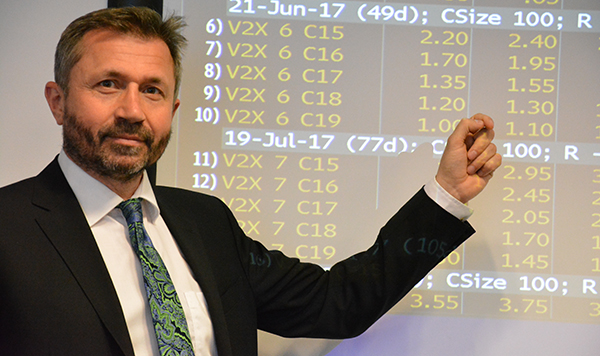

Blockchain, the financial technology which promises to revolutionise how we do business, has made another advance.
In a ground-breaking experiment, researchers from the Strathclyde Business School, National Physical Laboratory, the Toronto Stock Exchange (TMX), and consultancy firm Z/Yen, timestamped financial stock trades using atomic clocks and recorded the trades directly on a distributed ledger.
The 'Atomic Ledger' project recorded over 20 million transactions, timestamping each with Co-ordinated Universal Time (UTC), over three hours of trading to the ChainZy distributed ledger system.
The results will be analysed by Strathclyde Business School's Centre of Financial Regulation and Innovation, led by Director Daniel Broby.
Policy impact
Distributed ledger technology - also known as blockchain - is one of the core technologies of the new financial technology (Fintech) movement.
It enables financial market counterparties to store financial assets in a shared ledger, rather than relying on centralised ledgers as is predominately the case now.
Mr Broby said, "The role of distributed ledgers and precision timing is becoming ever more relevant as Fintech companies adopt blockchain for financial transactions. This is an exciting trial that will have real world policy impact.
"It is at the cutting edge of both finance and technology, helping make money payments over the internet cheaper, faster and more efficient."
The research team created a timestamping engine using Z/Yen's woven-broadcasting distributed ledger architecture to test the recording of high-frequency trading transactions.
Existing financial market 'clock synchronization and time stamp requirements' mandate that both trading venues and market participants synchronise their clocks to Co-ordinated Universal Time (UTC).
However, different processing speeds, server capabilities and execution code can result in digitally programmed orders arriving at a market place at different times.
Now new EU legislation coming into force on 3 January 2018 - The Markets in Financial Instruments Directive (MiFID II) - means firms who provide financial services must use more accurate timestamping traceable to UTC to promote improved transparency and better deals for customers.
Current regulatory guidance suggests that trades need to be recorded in microseconds (a millionth of a second).
The 'Atomic Ledger' project test used nanosecond resolution high-frequency data from the TMX located in Interxions's London Data Centre with support from data hosting company Hyperneph.
The researchers timestamped digital orders of varying programming length written to execute a series of buy and sell instructions. These were either logged with NPLTime®, using the atomic clocks at NPL, or logged with UTC plus a randomly generated time lag. The orders were then sent to a central clearinghouse also operating on UTC and written onto a ChainZy distributed ledger.
Further research by NPL and Strathclyde Business School will analyse the importance of timing in how orders are 'cleared'.
The results will provide insights into the need for precision timestamping in financial transactions, preferably at the microsecond level. The conclusions will prove useful for regulatory and financial market participants. It is believed the results will provide a benchmark to incorporate the concept of timing into financial asset price discovery.